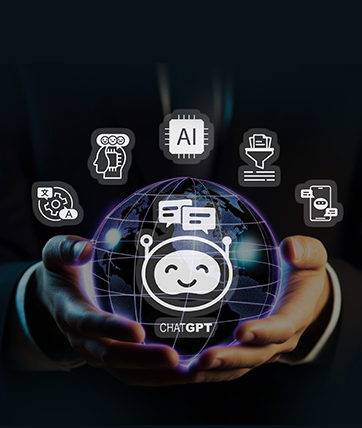The client is a leading asset management and investment firm that publishes industry news and research reports relevant to financial services professionals on their platform. Subscriber organizations leverage the platform to stay updated on current market trends, regulations, and innovations. Online users can utilize the platform to read published reports, synthesize insights, and provide feedback on research reports.
Traditional keyword-based search system led to sub-par user experience, resulting in customers reaching out for support
The client has a web-based platform (knowledge base) that offers their user base insights into the financial services domain through research reports and industry news. The platform had a traditional search system based on keywords; it lacked the context of the search query in the semantics of the financial industry.
Users in this digital age anticipate instant, contextual responses to their queries-something their existing searching conventions failed to provide. To maintain the platform’s relevance and effectiveness, the organization needed to adapt to evolving user preferences. This could only be achieved by transitioning to an advanced semantically driven search system.
Additionally, the client wanted complete ownership of the data present on their platform. Their objective was to transform the wealth of information into a user-friendly, accessible format so that only relevant data was extracted from the knowledge base to answer a user query. Through all these enhancements, the client aimed to achieve elevated user engagement and experience.
challenges
Client’s platform lacked an advanced search system providing contextually rich responses
Basic keyword-driven search hampered user experience
Need to transform massive information on the platform into a user-friendly format
A generative AI chatbot using LLM technology to provide users with accurate, contextual responses
Requirement Assessment
Damco’s A specialists carried out a detailed assessment of client’s requirements through insightful discussions with the stakeholders.
Implementation of Generative AI Chatbot
Post-assessment, the team selected to implement an advanced AI-driven chatbot that leverages the generative capabilities of LLM (Large Language Model) to fetch accurate, human-like responses to user queries, leading to enhanced user experience and reduced manual communication.
Creation of a Structured Knowledge Base
Our experts used relevant information sources such as research reports, internal documents, and external databases to develop a comprehensive knowledge base the chatbot could use to extract the necessary data and generate accurate responses. This knowledge base would remain agnostic to the LLM provider.
Development of a Scalable, Flexible Chatbot Solution
To ensure its long-term viability and adaptability, we focused on building a scalable, flexible chatbot not confined to any specific software architecture. We also addressed the client’s security requirements, making sure the solution aligns with the rigorous data protection standards of their industry.
In-Depth Analysis of LLM Providers
Our team also conducted a comprehensive analysis of various LLM providers, based on factors such as cost, response time, response quality, and ease of integration. The objective was to assist the client in choosing a cost-effective yet high-performing LLM provider that aligned with their accuracy, speed, and integration requirements. We also presented the pros and cons of fine-tuning and hosting an open-source LLM.
Optimization of Generative AI Chatbot
We fine-tuned the AI-powered chatbot to further ensure a high degree of accuracy, fluency, and conciseness in responses. Responses for a sample query were gathered after which manual and expected responses were provided to the AI model. This was done through an expected response matrix.
Enhanced user engagement, improved scalability, and less internal resources required to answer user queries.
